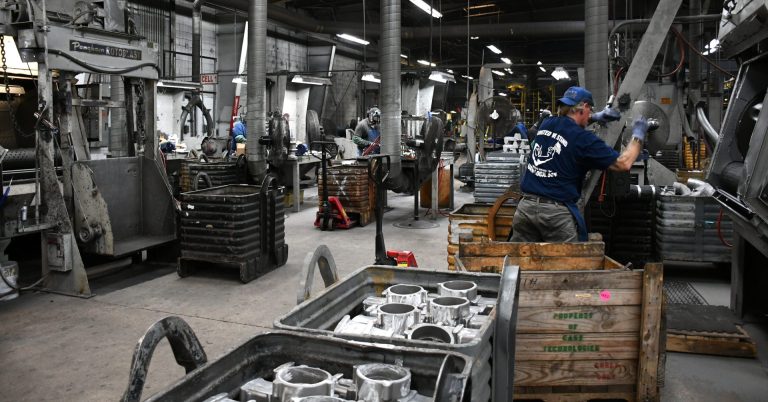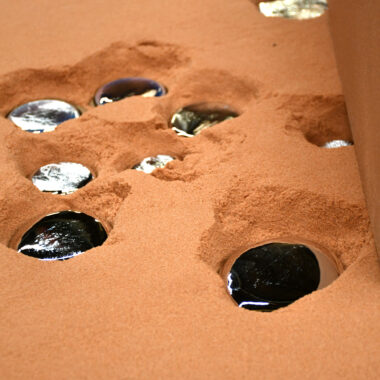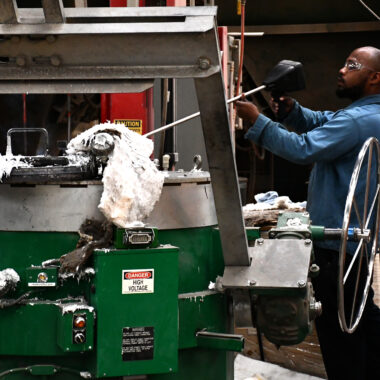Unlocking Excellence: Aluminum Casting Techniques & Tips for Superior Outcomes
Wiki Article
Study the Globe of Light Weight Aluminum Casting: Recognizing the Various Methods
Light weight aluminum spreading is a basic procedure in the production sector, with various approaches employed to develop intricate and specific parts. From the typical sand spreading approach to the advanced die spreading process, each method offers distinct advantages depending on the demands of the task.Sand Spreading Approach
Sand spreading, a widely-used approach in aluminum spreading procedures, entails developing molds made of compressed sand for pouring molten metal. Once the mold is all set, it is safely positioned in a flask and molten aluminum is put into the dental caries.After the steel has actually cooled and strengthened, the sand mold and mildew is escaped to disclose the light weight aluminum casting. Sand casting allows for the production of intricate forms and big components that might be challenging or expensive to generate utilizing other techniques. It is also a sustainable strategy as the sand can be recycled and utilized several times, reducing waste in the spreading process.
Long-term Mold And Mildew Strategy

One considerable benefit of the Long-term Mold And Mildew Strategy is the improved dimensional accuracy it offers. The metal mold and mildew permits for tighter tolerances and finer information in the final light weight aluminum castings contrasted to sand casting techniques. This accuracy makes it a preferred choice for applications where tight dimensional control is essential, such as in the aerospace and vehicle sectors.

Die Casting Process

Financial Investment Casting Strategy
Making use of an accuracy casting approach, Financial investment Casting Method entails producing detailed light weight aluminum components by putting liquified steel into a ceramic mold and mildew. This process, additionally understood as lost-wax casting, begins with the development of a wax pattern of the desired component (aluminum casting).Investment casting is typically used for manufacturing elements in industries where complex designs and limited resistances are called for, such as aerospace, vehicle, and clinical equipment. The adaptability and precision of the Financial investment Casting Strategy make it a valuable technique in the globe of light weight aluminum spreading.
Lost Foam Casting Approach
Having actually checked out the detailed precision of Investment Casting Technique, the focus now moves to the cutting-edge method of Lost Foam Spreading in aluminum element manufacturing. Lost Foam Spreading, also recognized as evaporative pattern spreading, is a contemporary technique where a foam pattern of the wanted part is developed and then covered with a refractory material.Furthermore, Lost Foam Casting is a cost-efficient process as it reduces the demand for cores and allows for the production of lightweight parts. Regardless of its advantages, Lost Foam Casting calls for mindful control of the casting process to guarantee and protect against issues high click here for more info quality elements.
Conclusion
To conclude, light weight aluminum spreading supplies a variety of approaches such as sand casting, irreversible mold and mildew technique, pass away spreading, financial investment casting, and shed foam casting. Each approach has its own benefits and applications, making light weight aluminum casting a flexible and commonly made use of procedure in different markets. Understanding the differences in between these techniques is essential in choosing one of the most suitable spreading technique for specific production requirements.Sand spreading, a widely-used approach in light weight aluminum spreading procedures, entails producing mold and mildews made of compressed look at these guys sand for pouring molten steel. aluminum casting.The Irreversible Mold And Mildew Method, like sand spreading, is one more prevalent method utilized in aluminum casting processes, providing unique advantages in terms of mold reusability and dimensional precision. The metal mold and mildew permits for tighter resistances and better information in the last aluminum spreadings contrasted to sand spreading approaches. The two major types of die spreading are cold chamber pass away casting and warm chamber die spreading, each ideal for various types of light weight aluminum alloys.In verdict, light weight aluminum spreading offers a range of techniques such as sand spreading, long-term mold strategy, pass away spreading, investment spreading, and lost foam casting
Report this wiki page